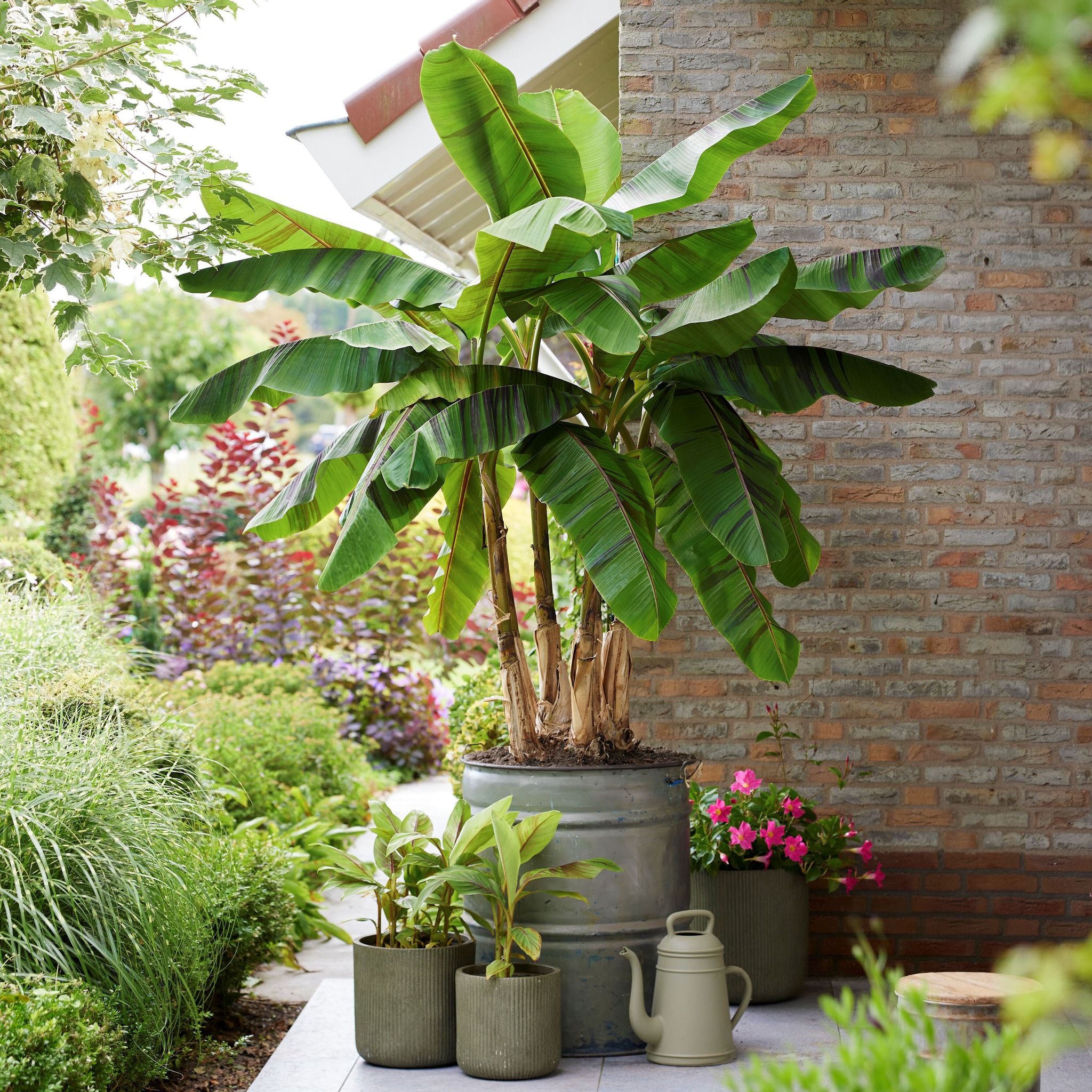
Caption
The Dwarf Cavendish banana plant has distinctive paddle-shape green leaves.
Photo Credit
marketacerna.com
Botanical Name
Musa spp.
Plant Type
Sun Exposure
Soil pH
Bloom Time
Flower Color
Special Features
Subhead
Tips on growing and caring for your banana plant indoors
The Almanac Garden Planner - Use It Free for 7 Days!
Plan your 2025 garden with our award-winning Garden Planner.
Read Next
Varieties
Banana plants come in a wide variety of types and sizes, some producing edible fruits and others ornamental. Each type requires different conditions to thrive, so make sure you choose your plant based on the species requirements below.

- Ensete ventricosum ‘Maurelii’, aka red/Abyssinian/wild banana: a fast-growing ornamental plant, similar to those in the Musa genus; winter-hardy in Zones 10 and 11, overwinter indoors elsewhere; grows 8 to 10 feet tall in temperate regions, with maroon-red tints on paddle-like foliage and leaf axils; white flowers, usually after 3 to 5 years (although not on those cut close to the soil for overwintering); fruit is inedible
- Musa acuminata ‘Dwarf Cavendish’, aka Chinese/ladyfinger banana: winter-hardy in Zones 9 to 11, overwinter indoors elsewhere; grows 4 to 8 feet tall, with paddle-shaped green leaves; cream to yellow flowers, usually in year 2 or 3 (although not on those cut close to the soil for overwintering); fruit is edible but seldom appears on overwintered plants
- M. acuminata ‘Dwarf Orinoco’: winter-hardy in Zones 7 to 11, overwinter indoors elsewhere; grows vigorously to 5 to 6 feet tall, with large, paddle-shaped foliage; pink flowers may appear on mature plants (although not on those cut close to the soil for overwintering); fruit is edible but seldom appears on overwintered plants
- M. basjoo, aka Japanese (fiber) banana: an ornamental plant; winter-hardy in Zones 9 and 10, overwinter indoors elsewhere; grows 6 to 14 feet tall, with paddle-shaped green leaves up to 6 feet long and 2 feet wide; cream-to-yellow flowers may appear on mature plants (although not on those cut close to the soil for overwintering); fruit is inedible
- M. ‘Siam Ruby’: an ornamental plant; winter-hardy in Zones 9 to 11, overwinter indoors elsewhere; compact habit, grows up to 8 feet tall; foliage and pseudostems are dark maroon red, with spots/streaks of chartreuse; provide full sun for deepest red color; plant may produce tubular, cream-color flowers, although seldomly; fruit is inedible
- M. velutina, aka pink/hairy banana: winter-hardy in Zones 7b to 11, overwinter indoors elsewhere; grows 4 to 6 feet tall, with paddle-shaped, dark green foliage; cream/yellow/pink flowers may appear (although not on those cut close to the soil for overwintering); peels are pink; the flesh is white and edible but heavily seeded
- Musella lasiocarpa, aka Chinese dwarf/golden lotus banana: an ornamental plant; winter-hardy in Zones 7 to 10, overwinter indoors elsewhere; grows 3 to 6 feet tall, with 1- to 4-foot-long, gray-green leaves; prized for its yellow flowers (usually in its second year, then annually); fruit that follows the inflorescence (especially in warm zones) is inedible
Gardening Products
More Like This
ADVERTISEMENT
Comments
Add a Comment













